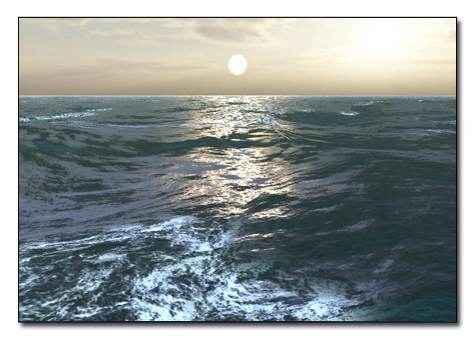

|
Realistic simulations of the ocean surface based on statistical wave models typically rely on very large Fourier grids. Real-time requirements severely limit the size of the grids that can be used, even if the FFT is implemented on the GPU. Moreover, none of the grids used so far are sufficient for capturing the entire dynamic range of ocean waves, which can easily span four to five orders of magnitude. Adaptive approaches that do not require the wave number samples to be equidistantly spaced offer greater flexibility, but they are not able to benefit from the computational efficiency of the FFT. The multi-band approach we propose removes the FFT as the computational bottleneck of sea surface simulations. By splitting the wave number range into a small number of non-overlapping, relatively narrow bands within which the samples are equidistantly spaced allows making use of the FFT while having some of the flexibility of the adaptive approaches that concentrate wave number samples in high-energy regions of the spectrum. A wide range of wave numbers can be modelled at a small fraction of the computational costs of the single-band approach, making the algorithm highly suitable for real-time applications, such as computer games and naval and flight simulators.
Publications
Video |